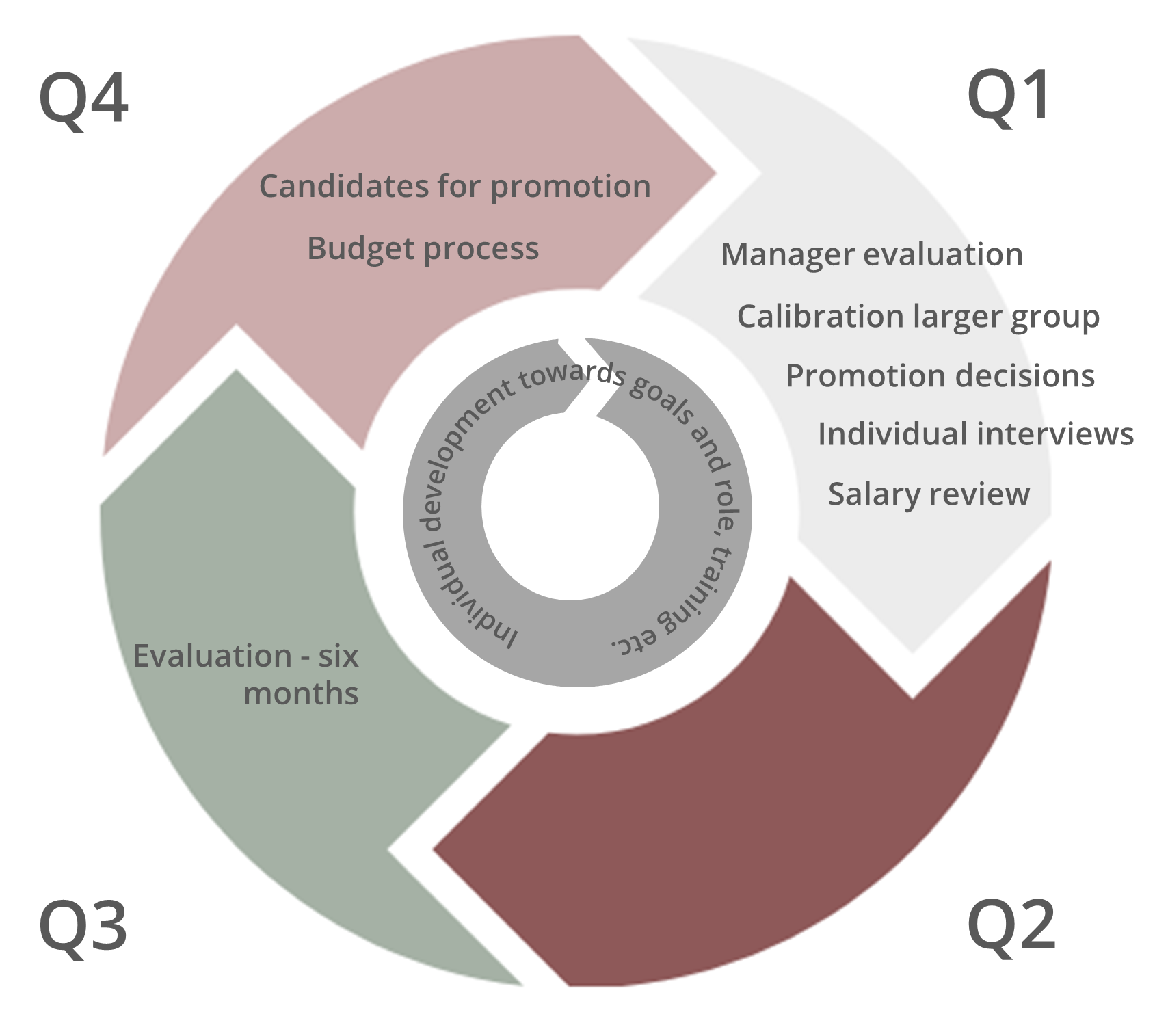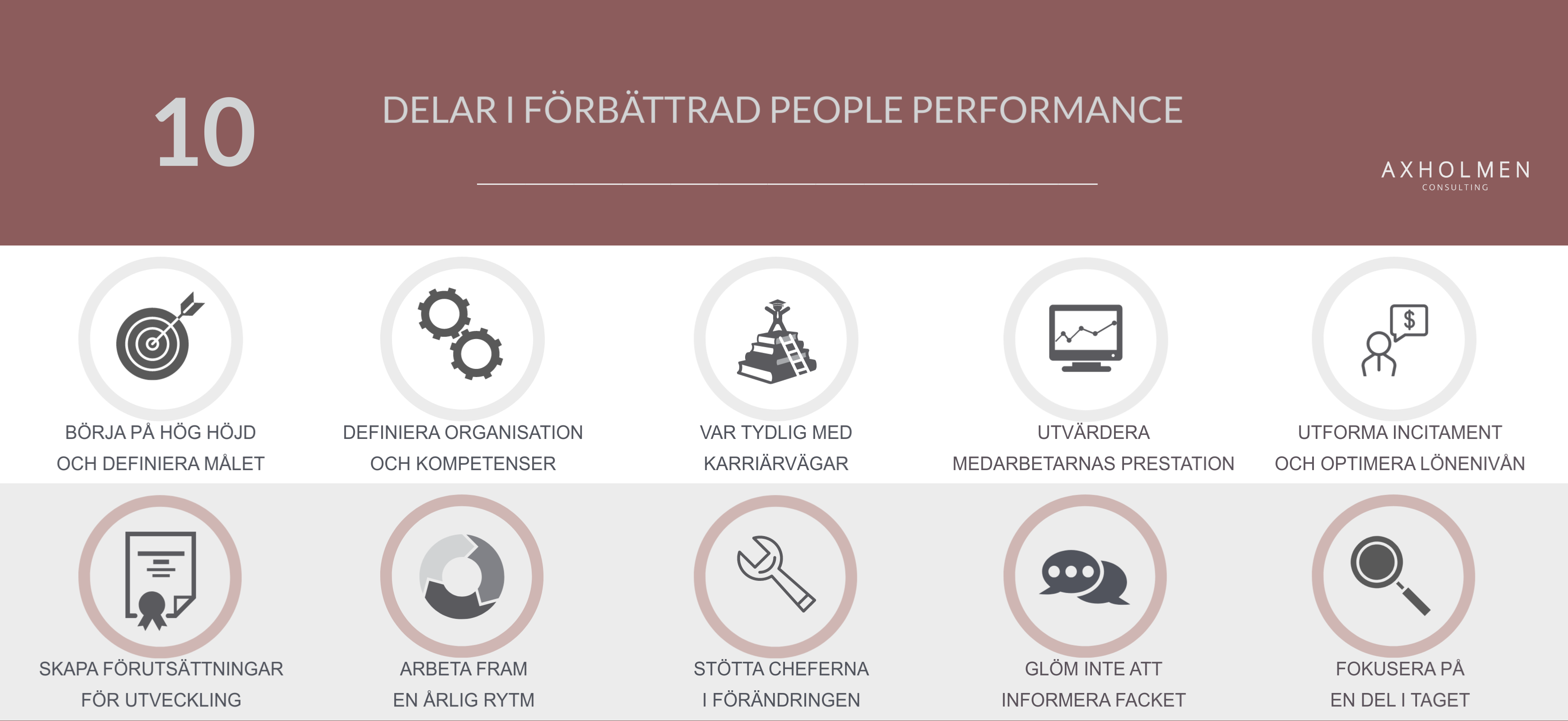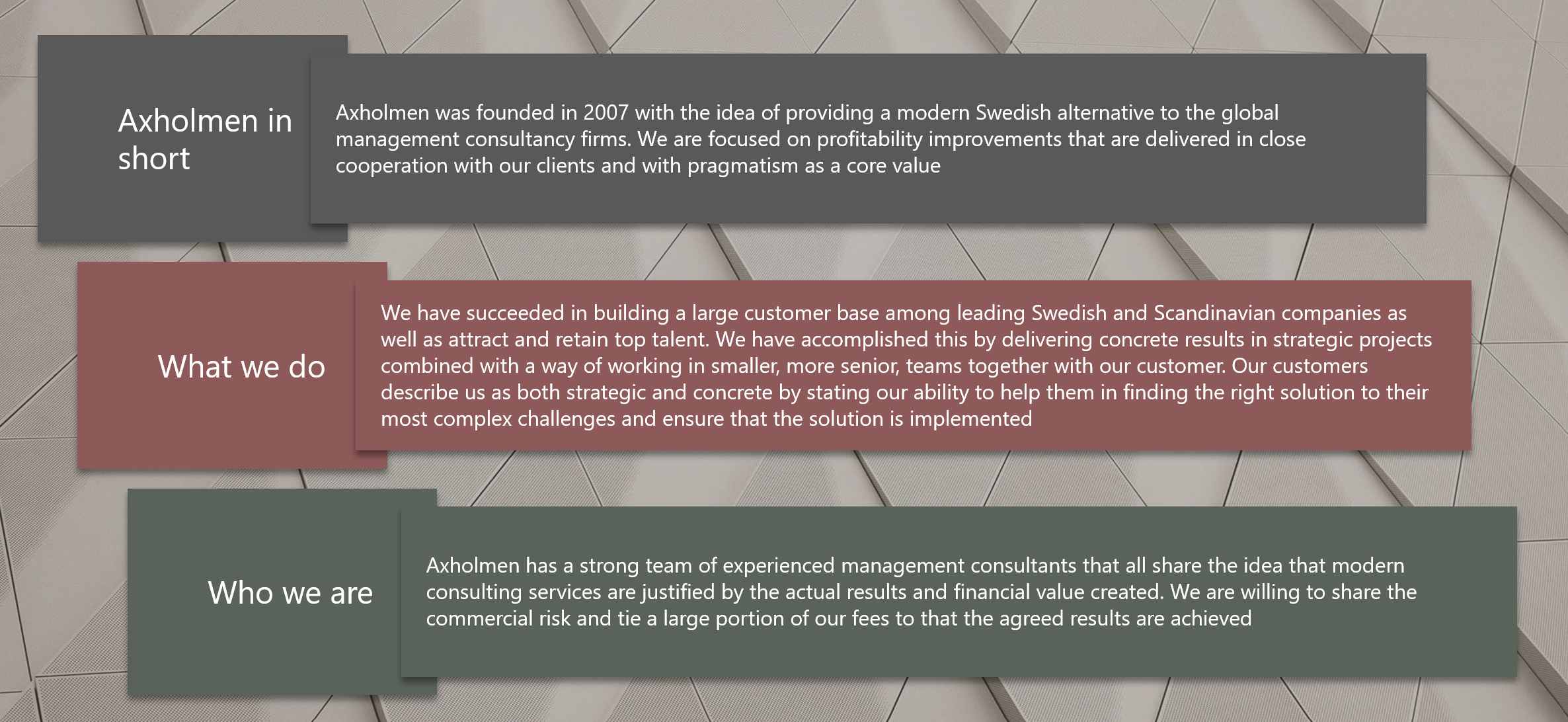1. START AT THE TOP – WHAT IS THE GOAL?
Always begin with the company’s target, how the company should get there (goals and strategy) and what is important in terms of core values. Is high growth the goal or high profitability? Does the company have a customer-oriented strategy, superior products, or a high production efficiency? It is all about going back to the core.
2. DEFINE ORGANIZATION AND SKILLS
Start designing the organization (roles and responsibilities) and skills required, based on goals and strategies, to take the company to the desired position. Keep the roles at a balanced level – detailed enough to provide guidance and set requirements, but not so extensive that no one can update and absorb what is written.
3. BE CLEAR WITH CAREER PATHS
A pragmatic career model that captures how complexity and requirements differ between roles at different levels. Map employees to career levels and compare with the actual need in the organization. By doing this you get an initial gap analysis to act on, but also a tool for continuous work towards an optimized organization – where supply meets demand.
4. EVALUATE EMPLOYEE PERFORMANCE
First and foremost, you must define what good performance is. Good performance should take the company to the desired state, and should be looked at from three perspectives:
- Achievement of annual targets (quantitative and qualitative, individual and group)
- Fulfills the work-role and career level expectations
- Behaviors that create the desired culture and are in line with the strategic direction of the function/business area
Capturing the dimensions in a model that describes how evaluation should take place and what high and low performance is defined as.
5. DESIGN INCENTIVES AND OPTIMIZE PAY LEVELS
Good performance should pay off in the form of compensation – a pay rise and possibly bonuses or benefits. But don’t forget that good performance should also be highlighted in everyday life. This could include movie tickets for members of projects that stay on schedule and on budget, allowing employees to nominate each other for achievement of the month, or building leaders who build employees. Since you rarely start with a blank slate, there won’t be a perfect mapping between salary level and place in the career model initially, but you have a tool to gradually approach an optimal level.
6. CREATE CONDITIONS FOR DEVELOPMENT
As your performance and career path become clear, so must the conditions for personal development. Do I have a training budget? What skills do I need to develop myself? Can my manager help me get a task that will give me the experience I need? Include a clear development plan in the annual appraisal, in the short and long term.
7. WORK OUT AN ANNUAL RYTHM
Let everything fall into place in a yearly cycle of “People Performance”. It’s all about when and how – in some cases a process may need to be developed.

Make sure there is an overall responsible person, either a business partner in HR or a person in the management team, to ensure that the rhythm is maintained and all elements are implemented.
8. SUPPORT MANAGERS DURING CHANGE
Managers are supposed to be ambassadors for the change and be able to answer all kinds of questions, but at the same time they are exposed to the change and have lots of questions themselves. Therefore, it is important not only to involve managers in the design, but also to support them with templates and information material, and to provide regular discussion forums and training.
9.DO NOT FORGET TO INFORM THE UNION
A new performance model or career model is a change in the organization and the union must be informed in a collective bargaining process. Inform the union representatives during the process and the result will be better and more accepted.
10. FOCUS ON ONE PART OF THE COMPANY AT A TIME
When working with “People Performance”, it is strongly recommended to focus on one area of the organization at a time, such as a function or business area. There are many reasons why:
- A description of what constitutes good performance or what is included in a role should be specific enough to be relevant
- This is important work that requires the focus and time of managers as well as HR, and it is difficult to maintain focus across an entire company at the same time
- Using a pilot to evaluate the models and learn facilitates improvements and creates positive reference cases for other parts of the company










